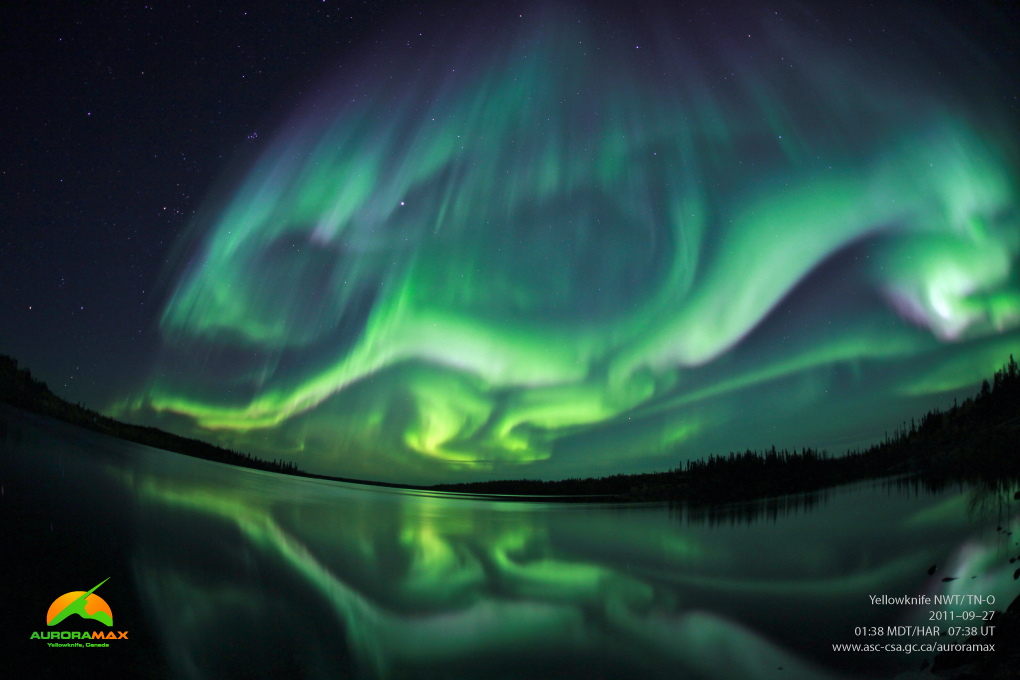What are the northern lights?
The northern lights, or aurora borealis, are a spectacular, colourful display of light commonly seen in the night sky in the northern hemisphere. Auroras in the southern hemisphere are known as the southern lights, or aurora australis.
Both the northern lights and the southern lights are polar lights, or aurora polaris, because they occur near Earth's magnetic poles.
In this video, discover the northern lights: what they are, how they form, their colours and how to view them. (Credits: Canadian Space Agency [CSA], NASA, Neil Zeller)
Since the International Space Station is at about the same altitude as the polar lights, astronauts see them at eye level! Here is an example.
How auroras form
The Sun blasts charged particles (electrons and protons) into space, which is called the solar wind. Earth's magnetic field forms an invisible shield that redirects the solar wind around our planet.
As Earth's magnetic field protects us from the solar wind, the magnetic field lines are dragged and stretched. They snap back like an elastic band, launching charged particles down towards Earth's surface along the magnetic field lines.
Auroras occur when these charged particles launched along Earth's magnetic field collide with gases in Earth's upper atmosphere.
Those collisions produce tiny flashes that fill the sky with colourful light. This light works the same way as a neon lamp or an old cathode ray tube television set. As billions of flashes occur in sequence, the auroras appear to move or "dance
" in the sky.
Auroras can be seen almost every night in the northern sky, from August to May. We see auroras in northern Canada because of how space connects down to the ground. The part of space where most of the "dragging, stretching, and snapping
" happens is connected by magnetic fields down to the north and south ends of Earth. Because of the shape of Earth's magnetic field, these magnetic field lines create two ovals of aurora around the North and South Poles.

Earth's magnetic field spans across thousands of kilometres in space.
As a rule, auroras are:
- most common around the spring and fall equinoxes
- easier to see in the winter than in the summer because the winter night sky is darker
Also, the more active the Sun is:
- the more stunning the auroras will appear on Earth
- the further south that the oval positioned above northern Canada will stretch
During active conditions auroras are visible across Canada, and in parts of the United States! When solar activity decreases, the oval returns to its normal position and the auroras become less intense.
A coronal mass ejection (CME) is an enormous expulsion of plasma and magnetic field from the Sun's outermost atmosphere. This animation traces the path of a CME as it leaves the Sun and slams into Earth's magnetosphere. The magnetic field lines reconnect behind the planet and produce the polar lights. (Credits: ESA, NASA)
A colourful phenomenon
Green, red, blue: the northern lights come in a variety of colours.
Go to The colours of the northern lights page to find out more.
Explore further
- Date modified:
